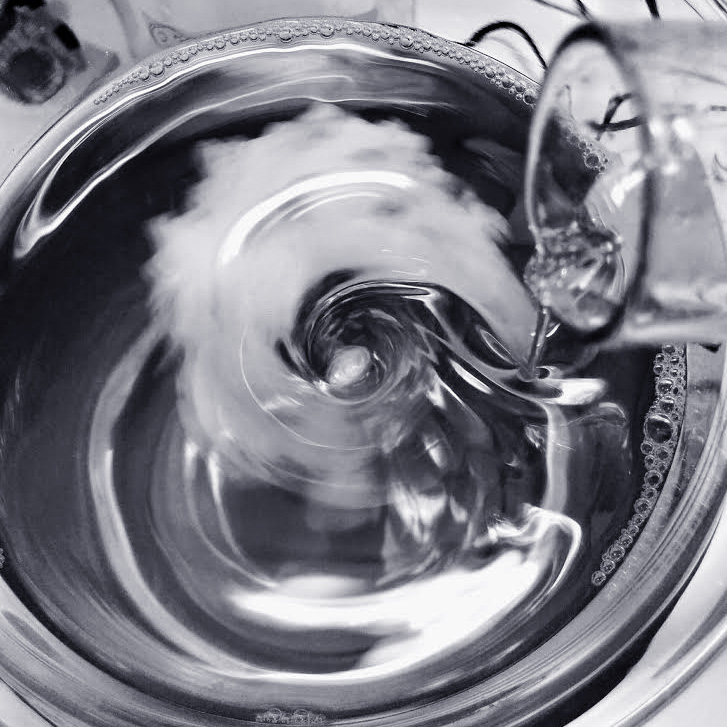In a new report researcher Hanna de la Motte, RISE and Anna Palme, Chalmers University of Techonology, summarize the development process and future steps for Blend Re:wind. The groundbreaking recycling process “Blend Re:wind – A Swedish process for the recycling of polycotton blended textiles” was released in November 2017. In this new report the development methods and results are described.

precipitation of terephtalic acid in the process. Image: Stina Björquist
This new report describes the developments made in the Blend Re:wind process and demonstrates how new fibers, viscose filaments, can be produced from separated and recycled cotton fibers. The produced viscose filaments are proved to have the same strength as filaments obtained from regular dissolving pulp used for textile fibers, which is crucial for further industrial processing towards recycled fabrics.
A large number of experiments were conducted in order to analyze how fiber characteristics change during the use phase, and what effects these changes might have for recycling. The degradation of cotton shown during the use phase hinders cotton to be recycled mechanically, however it does not affect the regeneration into viscose or lyocell. The degradation is actually needed in those processes to decrease the chain length (the degree pf polymerization), and to get the cotton dissolving pulp into solution prior to regeneration into new cellulose-based textile fibers. This conclusion could make the Blend Re:wind process suitable for future large scale post-consumer recycling.
In addition, an environmental assessment of the Blend Re:wind process is partly presented in the report. LCA was introduced and utilized as guidance already during the process development, rather than used as a later certification. This method was used in order to early identify environmental soil pits and guide the process development to avoid costly changes later on. The full LCA report is under review, but method and selected findings are available upon request.
A strong benefit with the Blend Re:wind process is that the separation takes existing industries into consideration. The separation process uses chemicals already utilized in the Swedish forest industry, and in the viscose industry, which will easy future integration.
”Our separation process, Blend Re:wind, is developed having existing industrial processes in mind, and our aim is to integrate as much as possible to minimize both environmental and economic costs, while boosting businesses. Scaling up from lab scale is the biggest challenge at the moment, and it is also costly. The integration possibilities of the Blend Re:wind process would however address these challenges in feasible ways.”
Hanna de la Motte, theme leader for theme 4, Recycling, within Mistra Future Fashion and researcher at RISE.
The Blend Re:wind process is the first of its kind chemically separating both cotton and polyester in such a way that both fibers can be reused in the making of new high quality textiles. The cotton fiber can be turn into viscose and the polyester into new durable polyester. This revolutionary process is the result of six years research within the research program Mistra Future Fashion by the partners Chalmers University of Technology, RISE Research Institutes of Sweden and the international forest industry group Södra. The process is a significant step towards fully closing the loop for fashion and textiles.
The report is written by Hanna de la Motte, RISE and Anna Palme, Chalmers University of Technology
Read the full report here.



